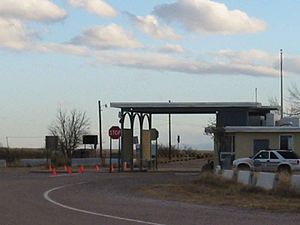 |
| Chip Somodevilla/Getty Images |
Why is it that the media and politicians are terrorized at the prospect of a partial government shutdown at the end of the week? Presumably, because they fear certain nonessential functions of government will halt and eventually some essential functions could be slowed down as well. But why is there no concern when brutal Mexican cartels are able to shut down basic services in border counties with waves of hundreds of impoverished and sick migrants, strain their social services, and fleece the pocketbooks of American taxpayers? Isn’t that the shutdown we should be addressing?
Hidalgo County, which fills out the bootheel of New Mexico, has four sheriff’s deputies, seven emergency medical services personnel, a small health clinic in Lordsburg, and a few volunteer EMTs who provide health care out of their homes or in clinics in rancher villages like Animas. It might seem like subpar infrastructure for health and public safety, but it is enough for 5,000 peaceful citizens used to living a life of rugged individualism. However, what happens when cartels target that county for an invasion of at least 28 groups of 100-400 volatile migrants at a time within a period of four months? What happens to their services then? You might call it a government shutdown.
It’s bad enough when such a volume of illegal immigration is driven into more built-up counties along the border with greater infrastructure, such as Yuma County, Arizona. In southwest Arizona, there is a city right at the international port of entry in San Luis with a substantial CBP headquarters to process the illegal immigrants. Yet it’s still a strain on the local counties. As Yuma County Sheriff Leon Wilmot said on my podcast last month, the migration just in Yuma is costing about $1.2 billion. He noted that “the Border Patrol has to buy diapers, feminine hygiene, hot meals, etc.” and “have essentially turned into a bed and breakfast and transportation hub for the cartels to further their criminal enterprise.”
While most of this cost is eaten by federal taxpayers, it also strains the local government. “Just last year alone, the Border Patrol took 1,700 illegal immigrants to our local hospital, which took about 10,000 Border Patrol man-hours off the field, and it cost us taxpayers $700,000 in medical bills,” said the sheriff.
Now picture Hidalgo County, New Mexico, with 5,000 people in 4,200 square miles with not a single village, never mind a town, anywhere in the southern part of the county, and a tiny CBP headquarters at a border crossing that has nothing but a single building with no city around it. Antelope Wells point of entry was originally manned by a single agent and saw, on average, four vehicles per day pass through the checkpoint. The main CBP headquarters, which in itself is not big, is a 90-minute drive northwest in Lordsburg. The nearest hospital is roughly the same distance northeast in Deming, which is in neighboring Luna County. The Deming hospital itself only has a few physicians on staff now treating all these illegal migrants.Read the rest from Daniel Horowitz HERE.
If you like what you see, please "Like" us on Facebook either here or here. Please follow us on Twitter here.


No comments:
Post a Comment